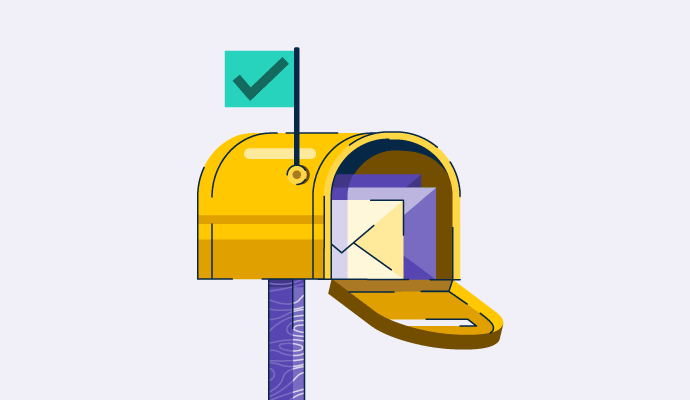Attribution Software Resources
Articles, Discussions, and Reports to expand your knowledge on Attribution Software
Resource pages are designed to give you a cross-section of information we have on specific categories. You'll find articles from our experts, discussions from users like you, and reports from industry data.
Attribution Software Articles
What Is Marketing Attribution? How to Measure It
Each stage of the sales funnel—from awareness to consideration to purchase—requires a unique strategy.
by Lauren Pope
Attribution Software Discussions
0
Question on: HubSpot Marketing Hub
How does HubSpot Marketing Hub integrate with other tools to create a cohesive digital marketing strategy?How does HubSpot Marketing Hub integrate with other tools to create a cohesive digital marketing strategy?
HubSpot Marketing Hub integrates with a wide range of tools and platforms to create a cohesive digital marketing strategy by streamlining workflows, enhancing data visibility, and improving overall efficiency. Here are some key ways in which HubSpot Marketing Hub integrates with other tools:
CRM Integration: HubSpot Marketing Hub seamlessly integrates with HubSpot CRM, allowing marketing teams to align closely with sales teams.
Email Marketing Integration: Integration with email marketing platforms such as Mailchimp, Constant Contact, or even Gmail and Outlook allows marketers to sync contact lists, automate email campaigns, and track email performance directly within HubSpot.
Social Media Integration: HubSpot Marketing Hub connects with major social media platforms like Facebook, LinkedIn, Twitter, and Instagram. Marketers can schedule posts, monitor engagement, track campaign performance, and even manage social ads—all from within HubSpot.
Content Management Systems (CMS): Integration with CMS platforms like WordPress, Drupal, or HubSpot CMS allows marketers to create, publish, and manage content seamlessly. This integration ensures that content marketing efforts are aligned with overall marketing goals and easily trackable through HubSpot's analytics.
Advertising Platforms: HubSpot integrates with advertising platforms such as Google Ads and LinkedIn Ads. Marketers can create and manage ad campaigns, track ad performance, and analyze ROI directly within HubSpot. This facilitates unified reporting and optimization of advertising spend.
Analytics and Reporting: Integration with analytics tools like Google Analytics or custom BI tools allows marketers to consolidate data from various channels. HubSpot's reporting capabilities then provide insights into campaign performance, customer behavior, and ROI, enabling data-driven decision-making.
E-commerce Platforms: For businesses with e-commerce operations, HubSpot integrates with platforms like Shopify or WooCommerce. This enables marketers to track customer interactions across the sales funnel, from lead generation to conversion, and personalize marketing efforts based on customer behavior.
Workflow Automation: HubSpot integrates with Zapier, allowing marketers to connect with over 2,000 other apps and automate workflows. This enables streamlined processes for lead nurturing, customer segmentation, and data synchronization across platforms.
HubSpot Marketing Hub's extensive integration capabilities enable marketers to build a cohesive digital marketing strategy by centralizing data, automating workflows, and optimizing marketing efforts across multiple channels.
HubSpot Marketing Hub seamlessly integrates with a wide range of tools to create a cohesive digital marketing strategy. From CRMs like Salesforce to CMS platforms like WordPress, and even ad platforms like Google Ads and Facebook, HubSpot connects your entire marketing stack. These integrations allow for centralized data tracking, consistent messaging across channels, and automated workflows that reduce manual effort. Whether it's syncing leads from forms, tracking user behavior, or automating email campaigns based on CRM data, HubSpot acts as a hub to ensure all tools work in harmony toward your marketing goals.
0
Question on: Tomi.ai
What is Tomi.ai used for?What is Tomi.ai used for?
We help data-driven marketing teams lower CAC and boost acquisition with our patented Predictive AI technology.
Primary use-cases are:
(1) Paid Digital Advertising:
- predictive conversions + predicted value-based bidding for Google and Meta ads
- predictive retargeting and value-based lookalike audiences
(2) Digital analytics and strategy
- Advanced A/B testing (testing ICP targeting & messaging 10x faster with 90% lower cost)
- Predictive Attribution: uncover every touchpoint's true impact on incremental future revenue & LTV
(3) Sales Effectiveness:
- Predictive Lead Scoring: better lead routing to close more deals and never let a high-intent prospect fall through the cracks
- Prospect Scoring and Warm Outbound (primarily for B2B): uncover additional high-intent pipeline that didn't become a lead yet (up to 75% never will as they'll chose to start a trial or request a demo from your competitor, if you don't act soon enough to engage).
Attribution Software Reports
Mid-Market Grid® Report for Attribution
Summer 2025
G2 Report: Grid® Report
Grid® Report for Attribution
Summer 2025
G2 Report: Grid® Report
Enterprise Grid® Report for Attribution
Summer 2025
G2 Report: Grid® Report
Momentum Grid® Report for Attribution
Summer 2025
G2 Report: Momentum Grid® Report
Small-Business Grid® Report for Attribution
Summer 2025
G2 Report: Grid® Report
Enterprise Grid® Report for Attribution
Spring 2025
G2 Report: Grid® Report
Small-Business Grid® Report for Attribution
Spring 2025
G2 Report: Grid® Report
Mid-Market Grid® Report for Attribution
Spring 2025
G2 Report: Grid® Report
Grid® Report for Attribution
Spring 2025
G2 Report: Grid® Report
Momentum Grid® Report for Attribution
Spring 2025
G2 Report: Momentum Grid® Report

